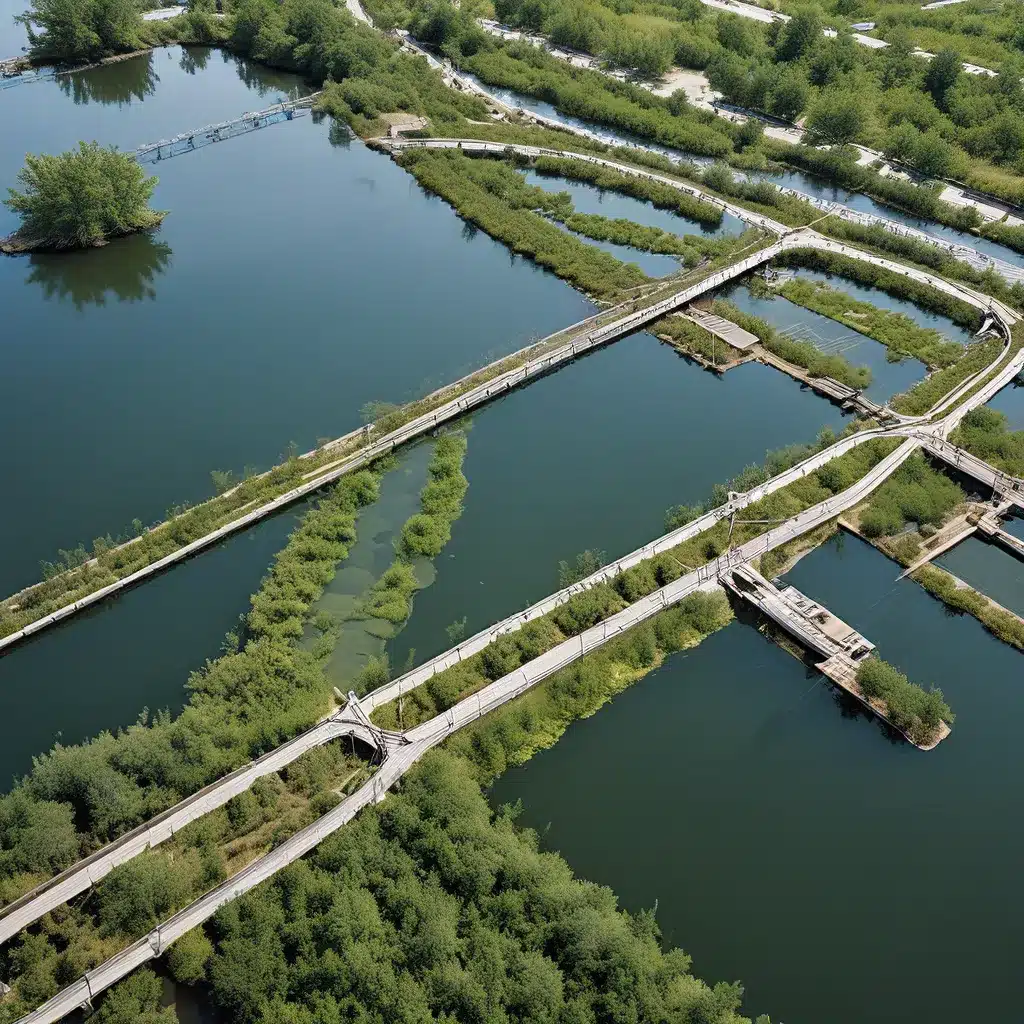
Navigating the Complexities of Water and the Environment
As I sit here, gazing out over the gently rippling surface of a nearby lake, I can’t help but be struck by the sheer complexity of the world of water and environmental compliance. It’s a landscape that seems so serene and peaceful on the surface, yet beneath lies a tangled web of regulations, technologies, and environmental concerns that can feel overwhelming at times.
Balancing Act: Water Treatment and Environmental Protection
One of the key challenges we face in this domain is the delicate balance between effective water treatment and safeguarding the natural environment. On one hand, we have the critical need to ensure that our water supplies are clean, safe, and suitable for human consumption, agricultural use, and a host of other applications. This requires the deployment of sophisticated water treatment technologies, from filtration and disinfection to advanced techniques like membrane filtration and advanced oxidation.
Anne Arundel County, for example, has made significant investments in its water infrastructure, including the installation of state-of-the-art treatment plants and the implementation of comprehensive water quality monitoring programs. This is just one illustration of the multifaceted efforts underway to ensure the reliable and sustainable provision of clean water.
A Delicate Balance: The Environmental Impact of Water Treatment
Yet, as we strive to meet our water treatment objectives, we must also grapple with the potential environmental consequences of these very same efforts. The chemicals, energy, and waste products associated with water treatment can have a profound impact on the surrounding ecosystem, from the disruption of natural water cycles to the release of contaminants into the environment.
Villanova University, for instance, has been at the forefront of research exploring ways to minimize the environmental footprint of water treatment processes, focusing on everything from renewable energy sources to innovative waste management strategies.
Navigating the Regulatory Landscape
Overlaying this complex interplay between water treatment and environmental protection is the intricate web of regulations and compliance requirements that water utilities and environmental service providers must navigate. From the Clean Water Act to the Safe Drinking Water Act, the regulatory landscape is constantly evolving, and keeping up with the latest standards and best practices can be a daunting task.
Yet, it’s a challenge that must be met head-on, as non-compliance can carry significant penalties, both financial and reputational. Water treatment facilities and environmental service providers must stay vigilant, continuously monitoring their operations, testing their effluents, and adapting their processes to ensure they are in full compliance with all relevant regulations.
Embracing Innovation and Collaboration
Fortunately, the water treatment and environmental compliance landscape is not one of gloom and doom. In fact, it is a realm of exciting innovation and fruitful collaboration, where forward-thinking organizations are working to develop and deploy cutting-edge technologies and strategies to tackle these complex challenges.
From the use of advanced sensors and real-time data analytics to the exploration of nature-based solutions and renewable energy sources, the possibilities for improving water treatment and environmental stewardship are truly boundless. And as we continue to share knowledge, pool resources, and work together, I’m confident that we can navigate these liquid landscapes with ever-increasing skill and effectiveness.
Liquid Landscapes: A World of Interconnected Systems
As I ponder the intricate tapestry of water treatment and environmental compliance, I can’t help but be reminded of the way in which all of these systems are inextricably linked. The water that flows through our taps, the rivers that sustain our ecosystems, the groundwater that nourishes our crops – they are all part of a vast, interconnected network that requires our utmost care and attention.
Empowering Individuals and Communities
And it’s not just about the big players – the water utilities, the environmental agencies, the research institutions. Each and every one of us has a role to play in shaping the future of our liquid landscapes. Whether it’s adopting water-conservation practices in our homes, supporting eco-friendly policies in our communities, or simply staying informed and engaged on these critical issues, our individual actions can have a profound impact.
A Future of Resilience and Sustainability
As I wrap up my musings on this topic, I can’t help but feel a sense of both urgency and optimism. The challenges we face in the realms of water treatment and environmental compliance are indeed daunting, but the opportunities for innovation and progress are equally compelling. By embracing a spirit of collaboration, curiosity, and continuous learning, I believe we can build a future where our water resources are managed with the utmost care and our natural environments flourish.
After all, these liquid landscapes are not just backdrops to our lives – they are the very lifeblood of our planet, and it is our responsibility to ensure that they are protected, nurtured, and celebrated for generations to come. So let’s dive in, explore the depths of these complex issues, and work together to create a more sustainable, resilient, and prosperous future for all.
Inland Waters Inc. is committed to being at the forefront of this vital effort, helping to bridge the gap between water treatment and environmental compliance through the deployment of cutting-edge technologies, the fostering of strategic partnerships, and the empowerment of communities. Join us on this journey as we navigate the liquid landscapes of the future.


